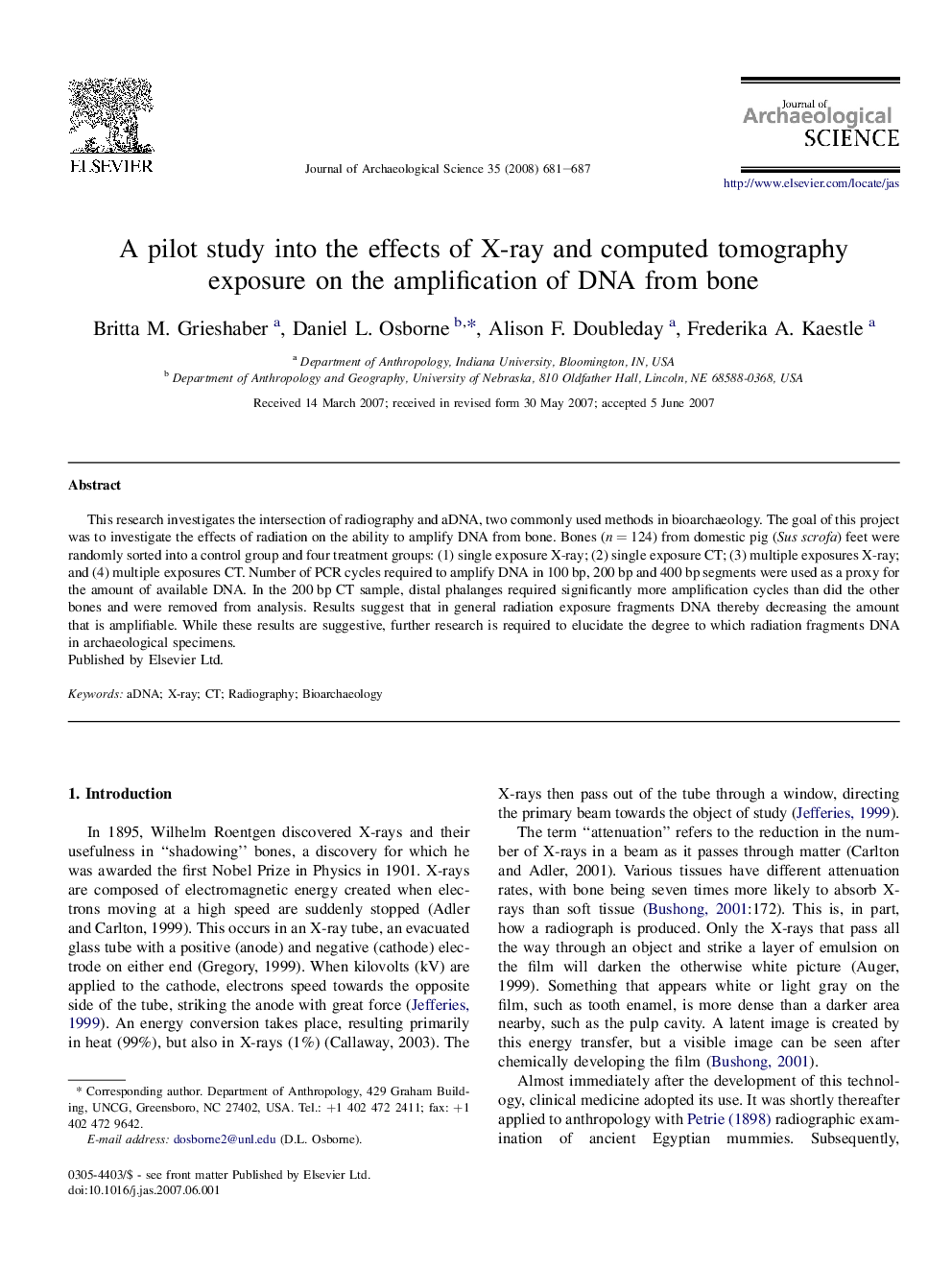| Article ID | Journal | Published Year | Pages | File Type |
|---|---|---|---|---|
| 1037533 | Journal of Archaeological Science | 2008 | 7 Pages |
This research investigates the intersection of radiography and aDNA, two commonly used methods in bioarchaeology. The goal of this project was to investigate the effects of radiation on the ability to amplify DNA from bone. Bones (n = 124) from domestic pig (Sus scrofa) feet were randomly sorted into a control group and four treatment groups: (1) single exposure X-ray; (2) single exposure CT; (3) multiple exposures X-ray; and (4) multiple exposures CT. Number of PCR cycles required to amplify DNA in 100 bp, 200 bp and 400 bp segments were used as a proxy for the amount of available DNA. In the 200 bp CT sample, distal phalanges required significantly more amplification cycles than did the other bones and were removed from analysis. Results suggest that in general radiation exposure fragments DNA thereby decreasing the amount that is amplifiable. While these results are suggestive, further research is required to elucidate the degree to which radiation fragments DNA in archaeological specimens.
